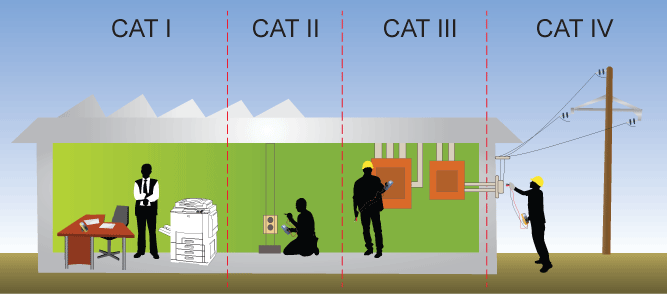| www.tmatlantic.com
Test & Soldering Equipment On-line Store |
|
D.E.V.I.C.E. (Wiki)Calculators Services |
|||||
Filter by first letter
|
Measurement categories (CATI, CATII, CATIII, CATIV)Electrical test & measurement tools that interact with electricity are designed for specific applications and conditions. Exceeding or deviating from application parameter can lead to inaccurate measurements or injury. Therefore there are four primary measurement categories for electrical tools: CATI, CATII, CATIII, and CAT IV. Measurement Categories are used to rate test instruments on their ability to resist a voltage spike, which is applied through a specific resistance. The higher the category, the more risk there that a high voltage can overload a circuit and cause electrical and physical damage. Usually, the higher the CAT (category) rating, the safer the rating.
CATI:
CATII:
CATIII:
CATIV: Find more in National Instruments’ tutorial. |
Measurement History Events
|
Site mapPrivacy policyTerms of Use & Store PoliciesHow to BuyShippingPayment




|


























